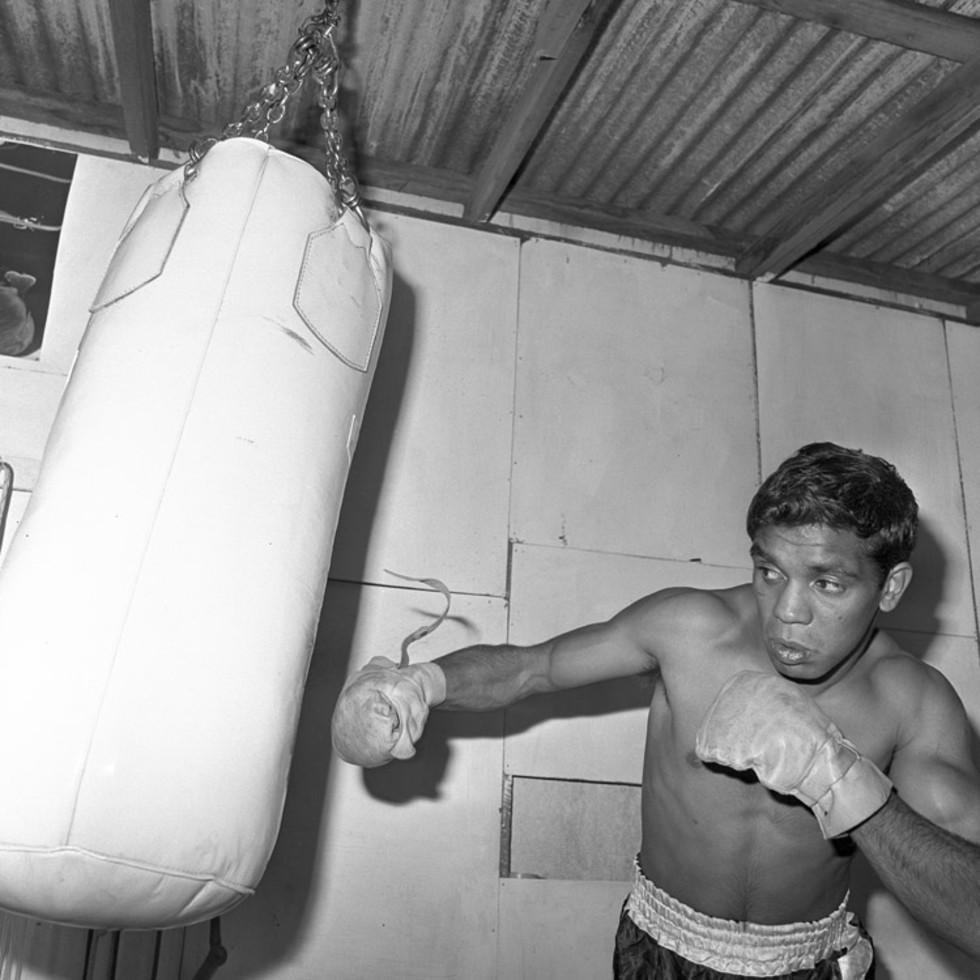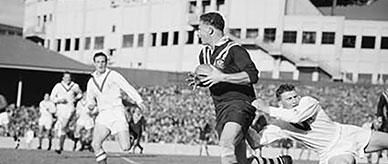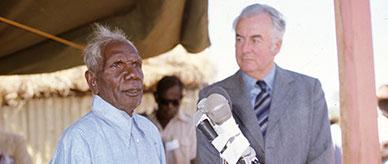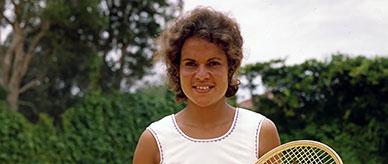


About this record
This black-and-white photograph from 1968 shows the Aboriginal boxer Lionel Rose working out at a gymnasium, most likely at the home of his trainer, Jack Rennie, in the Melbourne suburb of Essendon. He is pictured using a heavy punching bag suspended from the ceiling. This photograph is believed to have been taken after Rose became the World Bantamweight Champion.
Educational value
- Victorian-born Lionel Rose became a professional boxer in 1964 at the age of 16. He retired from his professional career in 1975 with a record of 53 wins and 11 losses.
- On 26 February 1968 Lionel Rose became the World Bantamweight Champion. In a unanimous points decision, Rose won the title after a 15-round fight in Tokyo against Japan’s Masahiko (‘Fighting’) Harada. Rose successfully defended the title three times before losing it to the Mexican Ruben Olivares on 22 August 1969.
- Lionel Rose was named Australian of the Year in 1968 in recognition of his achievement as only the second Australian to become a world champion boxer. He was the first Indigenous Australian to become Australian of the Year.
- Rose became a national hero after winning the title fight against Harada, and tens of thousands of people welcomed him home to Melbourne from Tokyo. That same year Rose was also appointed a Member of the Order of the British Empire.
- Whenever in Melbourne (where he fought most of his fights), Rose lived and trained at the Essendon home of his trainer, Jack Rennie and Jack’s wife, Shirley. Rose later described Rennie as ‘the best trainer probably in the world’ and attributed 70 per cent of his success to him.
- A professional boxing career offered the chance of good prize money, and perhaps fame, when other options for First Australians were limited. Throughout much of the 1900s, many Aboriginal boxers—including Lionel Rose’s father, Roy—made a living through touring ‘boxing tents’. The ‘tent fighters’ were challenged by locals, and money was bet on the outcome.
- Since this photograph was taken, because of injury concerns, the sport of boxing has become subject to tougher restrictions internationally. Following a death in 1982, the number of rounds in professional fights was reduced from 15 to 12. In amateur fights—including those held at the Olympic Games—head guards are compulsory.
- Lionel Rose was an orthodox (right-handed) boxer. Most boxers lead with their right hand, and boxers who lead with their left hand are known as ‘southpaws’.
- Having learnt to play the guitar as a child, Lionel Rose achieved success outside of the boxing ring as a musician. In 1970 he released the album I Thank You.
Acknowledgments
Learning resource text © Education Services Australia Limited and the National Archives of Australia 2010.
Related themes
Need help with your research?
Learn how to interpret primary sources, use our collection and more.



